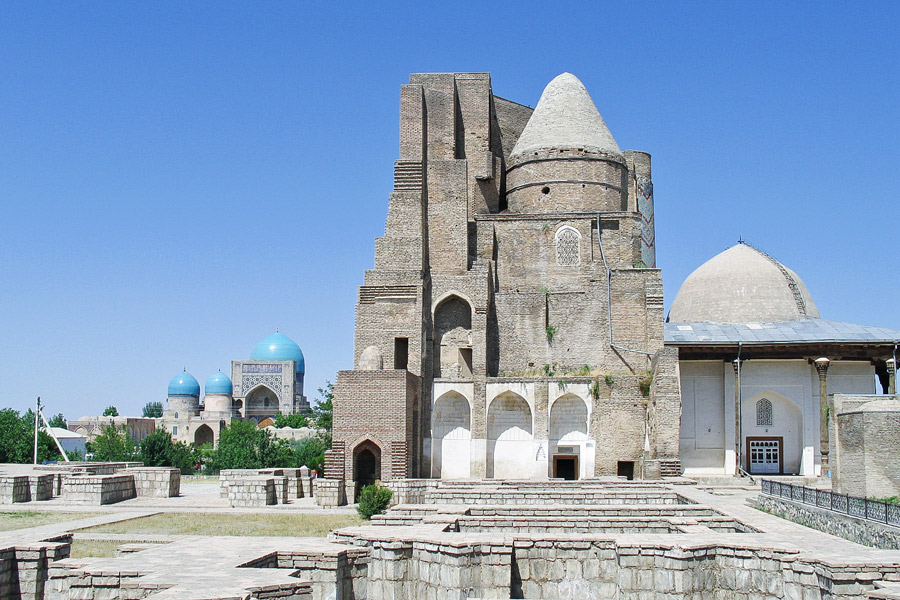Dor-us Saodat Complex, Shakhrisabz

Dor-us Saodat is a funerary complex housing the tombs of Amir Timur’s sons, Jahongir and Umar Shaykh. Built at the turn of the XIV and XV centuries, this memorial ensemble became one of the most imposing structures of its era. The architectural design of Dor-us Saodat is notable for its majestic scale - a hallmark of Timurid architecture. Despite significant damage over time, the complex still impresses with its grandeur and remains a lasting testament to the brilliance of medieval architects.
Structure of the Complex
The Dor-us Saodat ensemble includes the mausoleum of Jahongir, the tomb of Umar Shaykh, the underground crypt of Amir Timur, and the Hazrat Imam Mosque. Construction began in 1380, four years after the death of Jahongir, Timur’s heir. The finest architects of Khorezm were commissioned to build the mausoleum. Grieving deeply over the untimely death of his twenty-year-old son, Timur sought to erect a structure whose sheer scale would reflect his profound sorrow. The mausoleum is crowned with a massive dome rising to a total height of 52 meters. The entrance is framed by three stately arches adorned with relief sculptures crafted in the muqarnas technique.
Every architectural element in the complex carries symbolic meaning. The thick walls of Jahongir’s mausoleum represent strength and steadfastness, while the fine carvings on the marble slabs serve as a reminder of life’s impermanence. The interior was lavishly decorated, with walls embellished with mosaic panels, arabesques, and inscriptions from the Quran. Attached to Jahongir’s tomb is a mosque featuring a spacious iwan supported by intricately carved wooden columns. In the courtyard stand tall plane trees, planted during the construction of the complex - now around 700 years old.
In addition to Jahongir’s mausoleum, the complex includes the tomb of Umar Shaykh. While more modest in design, it retains the distinctive features of Timurid architecture. At the center of the ensemble lies an underground crypt originally intended for Amir Timur himself. The wooden doors leading to the subterranean hall are especially noteworthy. Their delicate carvings combine intricate floral patterns with calligraphic inscriptions quoting the Quran. However, contrary to his wishes, Timur was ultimately buried in Samarkand, in the renowned Gur-Emir mausoleum.
Dor-us Saodat memorial complex stands as a landmark of the Timurid Empire’s golden age. Its scale and decorative richness remain awe-inspiring centuries later. Today, the site continues to attract scholars, pilgrims, and travelers alike - a powerful symbol of the legacy and grandeur of the Amir Timur dynasty.

